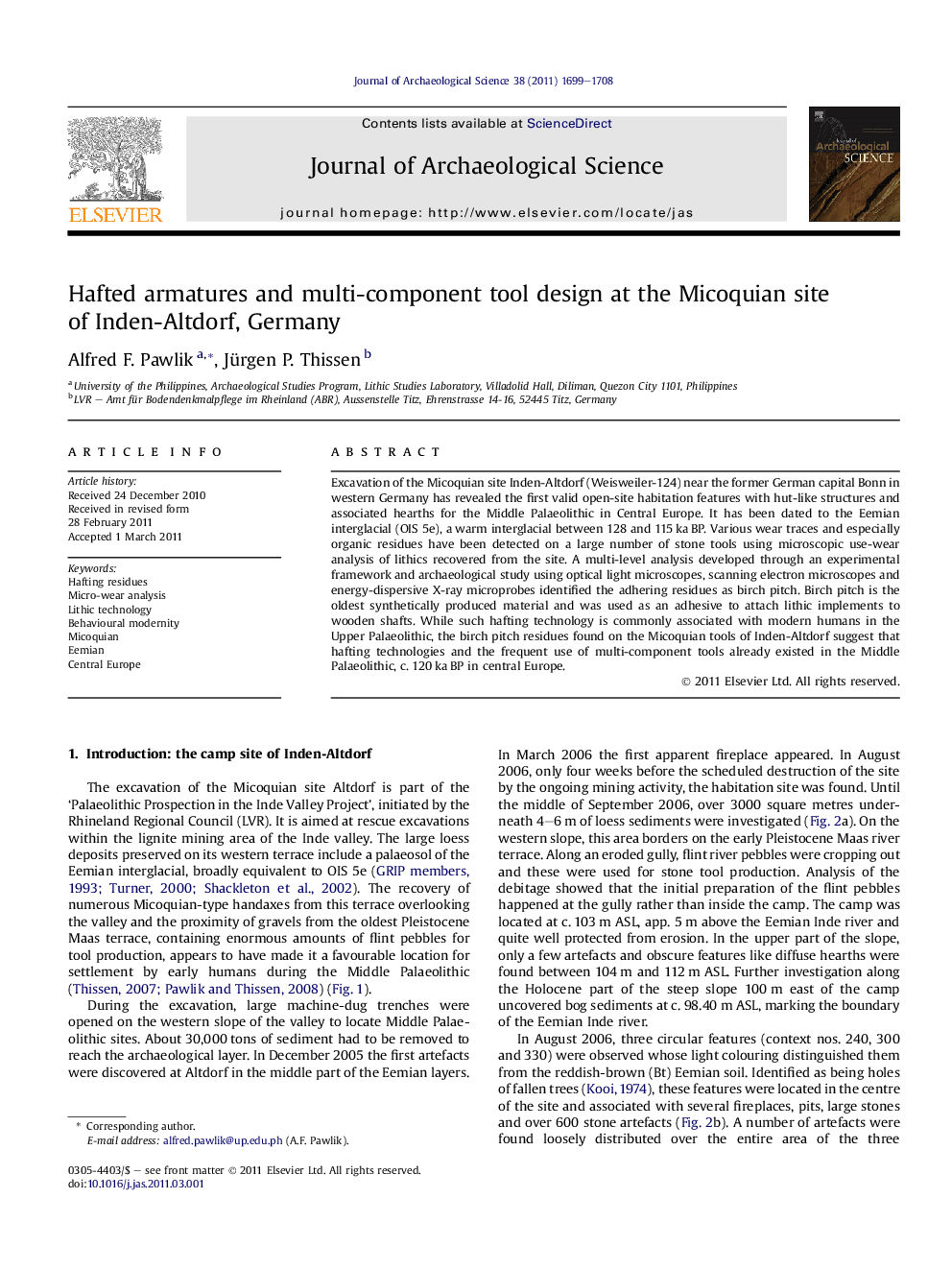| Article ID | Journal | Published Year | Pages | File Type |
|---|---|---|---|---|
| 1035864 | Journal of Archaeological Science | 2011 | 10 Pages |
Excavation of the Micoquian site Inden-Altdorf (Weisweiler-124) near the former German capital Bonn in western Germany has revealed the first valid open-site habitation features with hut-like structures and associated hearths for the Middle Palaeolithic in Central Europe. It has been dated to the Eemian interglacial (OIS 5e), a warm interglacial between 128 and 115 ka BP. Various wear traces and especially organic residues have been detected on a large number of stone tools using microscopic use-wear analysis of lithics recovered from the site. A multi-level analysis developed through an experimental framework and archaeological study using optical light microscopes, scanning electron microscopes and energy-dispersive X-ray microprobes identified the adhering residues as birch pitch. Birch pitch is the oldest synthetically produced material and was used as an adhesive to attach lithic implements to wooden shafts. While such hafting technology is commonly associated with modern humans in the Upper Palaeolithic, the birch pitch residues found on the Micoquian tools of Inden-Altdorf suggest that hafting technologies and the frequent use of multi-component tools already existed in the Middle Palaeolithic, c. 120 ka BP in central Europe.
► Inden-Altdorf is a Micoquian camp site dated into OIS 5e (Eemian), app. 120 ka BP. ► Micro-wear analysis of the stone tools delivered evidence for hafting at Altdorf. ► Residues on stone tools were identified as birch bark pitch used as an adhesive. ► Hafting technology and composite tool making are evident for the Micoquian at Altdorf. ► Modern behaviour is demonstrated by technological innovation and constructive planning.
